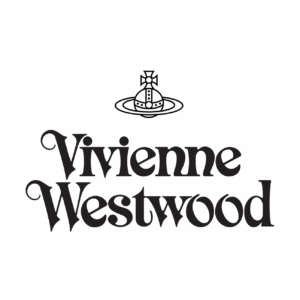As the global dairy industry faces mounting pressure to reduce its environmental footprint, leading brands are stepping up, or stumbling, in their responses.
This comparative analysis explores the sustainability performance of four major dairy companies, Danone, Lactalis, Arla Foods, and Friesland Campina, across ten key environmental criteria.
From carbon footprint to recycling rates, from energy consumption to supply chain transparency, each profile provides a nuanced snapshot of ambition versus reality.
The aim: to understand who is truly leading the way toward sustainable dairy, and who is still lagging behind despite bold promises.
Arla
Let in the Goodness
Criteria
Carbon Footprint, High
Arla Foods is committed to carbon neutrality by 2050, with a 63% cut in direct emissions (Scopes 1 & 2) by 2030 and a 30% cut in farm-level emissions (Scope 3) per ton of milk from a 2015 baseline.
In 2022, 81% of its emissions came from dairy farming, showing that most of its footprint is outside its direct control. While Arla’s climate goals align with science-based targets, its reliance on farm-level changes, such as feed optimization and manure management, makes reductions harder to track and enforce.
Ecological Impact, Medium
Arla integrates biodiversity and soil health programs into its farming practices, particularly in its organic dairy farms, where soil regeneration and biodiversity initiatives are standard.
However, the brand’s overall environmental impact is still tied to intensive dairy farming, which requires large land areas, significant water use, and contributes to biodiversity loss. While its sustainability efforts show promise, the contradiction between high milk production and true ecological sustainability remains unresolved.
Energy Consumption, High
Arla is transitioning toward 100% green electricity in Europe, investing in wind and solar energy, and phasing out fossil fuel-based boilers in favour of electrification and heat recovery systems. These efforts cut direct emissions, but a major challenge remains in decarbonizing farm energy use.
Many dairy farms still depend on diesel-powered machinery and natural gas heating, and Arla’s plans to support farmers in switching to renewable energy sources remain vague. The transition’s success hinges on whether Arla provides financial support or leaves farmers to fund their own energy shifts.
Freight Density, Low
Arla is optimizing logistics through route planning, LNG trucks, and partnerships to cut emissions, aiming for a 63% reduction by 2030. However, it doesn’t disclose freight density data, making it hard to assess efficiency improvements.
Recycling Rates, Medium
Arla aims for 100% recyclable packaging by 2025 and to eliminate virgin fossil-based plastic by 2030. While this goal is ambitious, it does not necessarily mean all packaging will be recycled, as this depends on local recycling infrastructure and consumer participation.
Additionally, substituting plastics with alternative materials (like paper-based cartons) has its own environmental cons, such as higher water usage in production.
Saving Levels, Medium
Arla works on maximizing raw material use and reducing waste in production, including recovering and reusing water extracted from milk and whey.
This helps reduce water consumption and energy use, but the scale of these efforts compared to total resource consumption is unclear.
Specific Product Monitoring, Low
Arla ensures strict quality and food safety controls across all production sites, complying with global food safety standards. However, from a sustainability perspective, there is little transparency on whether product monitoring also includes full environmental impact tracking.
Supply Chain Waste, Low
Arla has committed to cutting food waste by 2030, working on reducing losses across processing and distribution. However, a large share of supply chain waste occurs at the retail and consumer level, which Arla has less control over.
The company encourages responsible consumption but does not yet have a strong initiative to tackle consumer food waste, such as smart packaging solutions or consumer education campaigns.
Sustainability Scorecards, Low
Arla publishes detailed sustainability reports, tracking progress in carbon reduction, waste minimization, and biodiversity initiatives.
However, while these reports highlight targets and achievements, they lack third-party verification in some areas, making it difficult to independently assess success.
Water Management, Medium
Arla recycles water from milk and whey and wants to reduce water withdrawals, especially in water-scarce regions.
However, dairy farming is a water-intensive industry, and without clear data on farm-level water use, it’s hard to know if these efforts are enough to mitigate Arla’s total water footprint. Moreover, the push for more sustainable feed production could lead to increased water use in crop farming, causing a potential trade-off.
Related to other brands
With a total score of 2 out of 5, Arla’s sustainability performance reflects a company in transition—aware of its environmental responsibilities but limited by the structural complexity of large-scale dairy production.
While its investments in renewable energy and biodiversity are commendable, a lack of transparency, limited consumer-focused waste initiatives, and the challenge of transforming farm-level operations weaken its overall impact.
For Arla to make meaningful progress, it must bridge the gap between sustainability ambitions and measurable, verifiable results throughout its supply chain.
Number of criteria met by each brand:
- Danone 2.8 / 5
- Lactalis 3.3 / 5
- Arla 2.0 / 5
- Friesland Campina 2.8 / 5
ESCP Business School Team
Research developed by five curious international ESCP Business School students who have worked together to successfully complete their consulting project. They analysed four brands in four different categories -24 brands: electric cars EV, dairy products, computers, personal care, luxury apparel, fast fashion-, according to 10 environmental criteria.
- Alix AMMEUX: Dairy Products
- Hanna AMSELLEM: Electrical Vehicles
- Leonardo BERTINI COLLA: Computers
- Zackary BOISNEAULT: Personal Products
- Ariane DESPRES: Luxury Apparels
- Caterina GIUSTINIANI: Fast fashion
Sources
- Danone Universal Registration Document 2024: https://www.danone.com/content/dam/corp/global/danonecom/investors/en-all-publications/2025/registrationdocuments/urd2024accessibleversion.pdf
- Danone 2024 Mission Committee Report: https://www.danone.com/content/dam/corp/global/danonecom/investors/en-all-publications/2025/shareholdersmeetings/committeereportdanone2024.pdf.coredownload.pdf
- Danone Sustainability Dashboard 2023: https://www.danone.com/content/dam/corp/global/danonecom/investors/en-sustainability/reports-and-data/cross-topic/danonedashboard2023.pdf
- Danone Sustainability Portal: https://www.danone.com/sustainability.html
- Danone Water Policy 2024: https://www.danone.com/content/dam/corp/global/danonecom/about-us-impact/policies-and-commitments/en/2024/danone-water-policy-2024.pdf
- Lactalis Group News and Sustainability Updates: https://www.lactalis.fr/en/news/
- Lactalis UK & Ireland 2024 Sustainability Update: ttps://www.linkedin.com/posts/lactalis-uk-ireland_in-june-we-launched-our-2024-sustainability-activity-7227320150817935360-6Cyw
- Arla Annual Report 2024: https://www.arla.com/493f52/globalassets/arla-global/company—overview/investor/annual-reports/2024/arla-annual-report-2024-uk2.pdf
- Arla Annual Reports Archive: https://www.arla.com/company/investor/annual-reports/
- Arla Half-Year Results 2024: https://www.arla.com/company/news-and-press/2024/pressrelease/half-year-results-2024-arlas-robust-first-half-of-2024-is-paving-the-way-for-enhanced-sustainability-efforts/
- Arla Sustainability Portal: https://www.arla.com/sustainability/
- FrieslandCampina Annual Report 2024: https://www.frieslandcampina.com/uploads/2025/03/Annual-Report-2024-Royal-FrieslandCampina-NV.pdf
- FrieslandCampina Annual Report 2024: https://annualreport.frieslandcampina.com/
- FrieslandCampina Financial and Sustainability Reports: https://frieslandcampina.com/about-us/financials/financial-and-sustainability-reports/
- FrieslandCampina Sustainability Overview: https://www.frieslandcampina.com/sustainability/
- FrieslandCampina GHG Methodology Report 2024: https://www.frieslandcampina.com/uploads/2025/02/Greenhouse-gas-emissions-from-raw-milk-and-dairy-products-AR2024-Methodology-report-V1.3-external.pdf





0 Comments